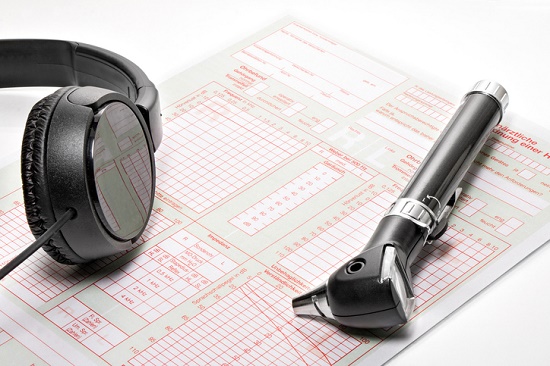
The hearing test really is the easy part. The challenging part is acknowledging your hearing loss and actually setting up the hearing test in the first place.
You’ve most likely heard the stats by now: 48 million individuals in the US have hearing loss but only a minor fraction actually do anything about it, and only 20 percent of people who could reap benefits from hearing aids actually wear them.
So if you’ve already arranged your hearing test, congrats, you’ve already overcome the strongest hindrance to healthier hearing.
The hearing test, as you’ll witness, is a simple and easy, non-invasive process that will determine the degree of your hearing loss to help determine the best suited method of treatment.
After you initially arrive at the office, you’ll begin by filling out some paperwork. Then, you’ll consult with your hearing care provider to talk about your hearing health history.
Your Hearing Health History
Your hearing loss, if existing, can be a consequence of direct exposure to loud sound, the normal aging process, or by an underlying condition. You’ll want to rule out any underlying medical conditions prior to moving on to the actual hearing test.
If you have an earwax impaction, for example, you may very well be hearing better within minutes after a professional cleaning. The existence of any other ailments will be analyzed and the applicable referral made, if required.
After examining your basic medical history, you’ll go over your subjection to loud sounds, your hearing loss symptoms, and exactly what you wish to accomplish with better hearing.
It’s important to determine possible causes, how symptoms are negatively affecting your life, and how better hearing will enhance your life, which is in the end the entire point. Be wary of the practitioner that doesn’t appear to really care about the reasons why you want to improve your hearing in the first place.
The Hearing Test
There’s one more step prior to starting the hearing test: the visual examination of the ear with an instrument known as an otoscope. This will help rule out any issues with the ear canal, the eardrum, or the elevated buildup of earwax.
Next, you’ll be accompanied to a sound-treated room with your hearing care professional. You’ll be asked to wear headphones, and the specialist will start to play you some sounds.
You will be presented with various sounds at assorted frequencies, and you’ll be asked to identify the quietest sounds you can hear at each pitch. This is called your hearing threshold, and the hearing care provider will capture these values on a chart called an audiogram.
The hearing exam may also incorporate speech testing, where you’ll be asked to repeat the words presented to you. Assorted types of words, delivered at different volumes with and without background noise, will be presented. This will help determine if hearing aids can assist you with speech understanding.
At the conclusion of the testing, your hearing care provider will review the results with you.
Reviewing Your Hearing Test Results
Referencing your audiogram, your hearing care provider will now review your hearing in both ears. Determined by the results, your hearing will be categorized as normal or as displaying mild, moderate, severe, or profound hearing loss.
If a hearing loss is found, the next move is going over your treatment options. Seeing as there are no present medical or surgical treatments to restore hearing damage, this means comparing your hearing aid options.
Current hearing aids are available in a variety of shapes, sizes, and colors, at a variety of prices with several advanced features. In choosing your hearing aids, it’s essential to work with an experienced hearing care professional for three reasons:
- They can help you identify the ideal hearing aid model to satisfy all of your objectives.
- They can help you identify the advanced features you need—along with the ones you don’t—at a price that complements your budget.
- They can program your new hearing aids to enhance only the sounds you have trouble hearing—determined by the hearing test—ensuring optimal sound quality.
And that’s it, a quick, simple procedure in exchange for a lifetime of healthier hearing. We’d say that’s a very good deal.
We look forward to seeing you!
